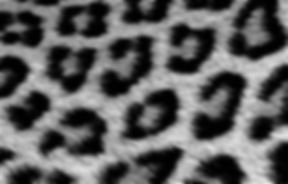

Out For Bengals
& Savannahs
TICA Registered Kittens
717-379-2787
OutForBengals@gmail.com
OutForSavannahs@gmail.com
Pennsylvania


Bengal Information
The Bengal cat is a hybrid breed that was created by breeding the wild Asian Leopard Cat (ALC) with domesticated breeds.
-
F1 generation Bengal cats can be anywhere from 50-85% ALC.
-
F2 generation Bengal cats typically have a mix of 30% ALC mix.
-
F3 generation Bengal cats usually have an average of 19% ALC mix.
-
F4 generation Bengal cats generally have a ALC mix of 15%.
-
F5 generation Bengal cats are closer to domestic cats and typically have an 11% ALC mix.
The first non-F1 Bengal cat to ever be bred was by Jean Mill in 1963.While Jean Mill was not responsible for the first ever Bengal, she was the primary advocate of Bengal cats in the 1960’s and was able to bring them into popularity by breeding them past the F3 generation, allowing them to be considered domestic cats.
More than 20 years after Jean Mill bred the first F4 Bengal, the Bengal cat breed was officially recognized by the International Cat Association (TICA) in 1986.
Bengals quickly gained the attention of cat lovers all over, and demand for Bengals has been rising ever since with over 2,000 registered Bengal cat breeders around the world and an estimated 500,000 – 1,200,000 Bengals that now exist. The goal of the Bengal breeding program is to create a domestic cat which has physical features distinctive to the small forest-dwelling wildcats, and with the loving, dependable temperament of the domestic cat. A Bengal cat is an athletic animal, alert to its surroundings; a friendly, curious, confident cat with strength, agility, balance and grace. It is a medium to large cat which exhibits a very muscular and solid build. Its wide nose with prominent whisker pads and large oval, almost round eyes in a slightly small head enhance the wild appearance and expressive nocturnal look. It’s very slight, to nearly straight, concave profile and relatively short ears with wide base and rounded tips add to the Bengal’s distinctive and unique appearance. The short, dense coat has a uniquely soft and silky feel. The coat may be glittered or not glittered, with neither type to be given preference. A thick, low-set, medium-length tail adds balance to the cat.
Bengals have a wild appearance; their golden shimmer comes from their leopard cat ancestry, and their coats may show spots, rosettes, arrowhead markings, or marbling. Bengals come in a variety of colors as well.
They are an energetic breed which needs much exercise and play. The Bengal is an average to large-sized. Bengals are long and lean. They are larger than the average house cat because of their muscular bodies.
Temperament
Bengal cats are smart, energetic and playful (though in some rare cases they may be quite lazy). Many Bengal owners say that their Bengal naturally retrieves items, and they often enjoy playing in water.
Bengal cats are active, inquisitive cat that loves to be up high. Most Bengals enjoy playing, chasing, climbing and investigating. In general, Bengals enjoy action. Bengals are generally confident and curious.
Beyond their good looks, Bengal cats make excellent pets. Talk to someone who owns a Bengal, and they will likely compare their Bengal to a dog as much as a cat. Bengals are very intelligent, making them far easier to train than most cats. They’re remarkably loyal, social, fun-loving, and normally get along great with kids or other pets. Families also love that Bengals are hypoallergenic cats, meaning they’re less likely to cause allergies. Because of their special coat, Bengals don’t have the shedding issues that many other cats have, so several families have learned that Bengal cats are excellent pets for families with allergies.




